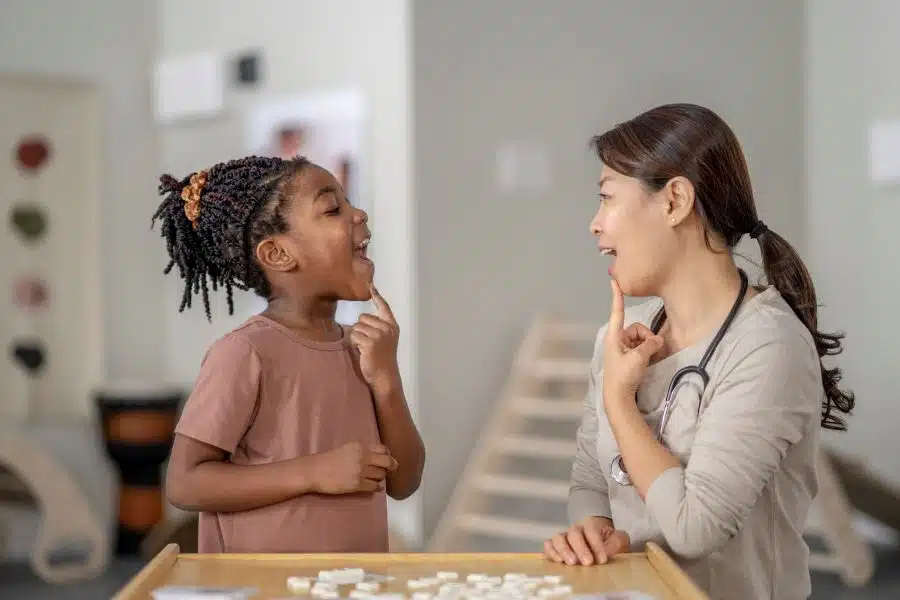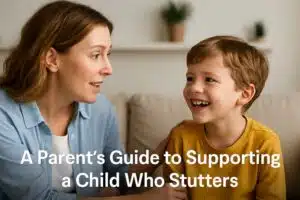What if your child could read before they could even speak in full sentences? Many parents would see this as a remarkable gift—but what happens when their child struggles to understand the words they read or connect with others socially?
Hyperlexia, a condition often linked to autism, presents a unique challenge: an advanced ability to decode words combined with difficulties in comprehension and communication. Learn more about the benefits of early intervention with therapy to support your child’s development. We’ve worked with countless families navigating this journey, and have seen firsthand how early recognition and the right support can transform a child’s development.
In this guide, we’ll explore hyperlexia, its connection to autism, and how you can empower your child to thrive both academically and socially.
What is Hyperlexia?
Definition & Characteristics
Hyperlexia is more than just early reading—it’s a pattern of strengths and challenges. Children with hyperlexia often teach themselves to read at a young age but may struggle with comprehension, verbal communication, and social interactions. We’ve met many children who can fluently decode complex words yet have difficulty answering simple questions about what they’ve read.
Types of Hyperlexia
There are three recognized types of hyperlexia:
- Hyperlexia I: Neurotypical children with an early interest in reading.
- Hyperlexia II: Children on the autism spectrum who exhibit strong reading skills but struggle with comprehension and communication.
- Hyperlexia III: Children with hyperlexia-like traits but who do not meet the criteria for autism.
Understanding which type of hyperlexia your child has is crucial in shaping the right support plan.
Signs & Symptoms of Hyperlexia
Early Indicators
- Reads words far beyond expected age level.
- Struggles with understanding verbal language and following instructions.
- Shows an intense fascination with letters, numbers, and patterns.
Recognizing these signs early can make a significant difference. Understanding how sensory processing affects learning may provide additional insights into your child’s needs. We’ve seen parents go from feeling overwhelmed to feeling empowered once they understand how to channel their child’s strengths while addressing their challenges.
How Hyperlexia Differs from Giftedness
Gifted early readers typically understand what they read and engage in social interactions with ease. Children with hyperlexia, on the other hand, may read fluently but struggle with comprehension, social cues, and flexible thinking. Distinguishing between the two is essential for providing the right type of support.
The Link Between Hyperlexia & Autism
Overlapping Traits
Many children with hyperlexia are also diagnosed with autism. If you’re curious about the early signs and characteristics of autism, understanding these traits can help guide your next steps. Common overlapping characteristics include:
- Challenges with verbal communication.
- Repetitive behaviors and routines.
- Sensory sensitivities.
Families often struggle to determine whether their child’s early reading ability is a sign of giftedness or part of a broader developmental pattern. Hyperlexia can sometimes be a bridge to an autism diagnosis, but it doesn’t always mean a child is on the spectrum.
Key Differences Between Hyperlexia & Autism
Not all children with hyperlexia have autism. Some may only struggle with comprehension while excelling in other developmental areas. A professional evaluation is essential for a clear diagnosis.
Diagnosis & Assessment
Professional Evaluation & Testing
If you suspect your child has hyperlexia, a developmental psychologist, speech-language pathologist, or occupational therapist can conduct assessments to determine whether the reading ability is linked to a broader developmental condition. At Uplift Therapy Center, we emphasize comprehensive evaluations to tailor interventions effectively.
Questions to Ask Your Child’s Therapist
- How can I help my child improve their comprehension skills?
- Are additional therapies like speech or occupational therapy recommended?
- What learning techniques can we use at home?
A collaborative approach between parents and therapists leads to the best outcomes. Open conversations and shared strategies help children receive the support they need.
How to Support a Child with Hyperlexia
Language & Communication Strategies
- Use visual aids and social stories to reinforce verbal communication.
- Encourage interactive reading by asking comprehension questions.
Simple adjustments in communication can dramatically improve a child’s ability to understand and process language. I’ve seen remarkable progress in children who engage with structured storytelling and consistent routines.
Speech & Occupational Therapy Techniques
- Speech therapy helps children develop conversational skills and improve comprehension.
- Occupational therapy supports fine motor skills and sensory integration.
At Uplift Therapy Center, our approach through speech and occupational therapy will address both language comprehension and sensory processing challenges. Implementing sensory strategies for bedtime can help create a structured and calming environment for your child.
Educational Strategies for Hyperlexic Learners
- Use structured learning techniques, such as color-coded sentences and predictable story formats.
- Allow breaks and movement activities to maintain engagement.
Children with hyperlexia often thrive with visually structured lessons. Many of the families we work with see success using multi-sensory learning techniques tailored to their child’s unique strengths.
Encouraging Social Skills & Peer Interaction
- Facilitate guided playdates to build confidence in social settings.
- Teach conversational turn-taking and emotional recognition through role-playing.
Many hyperlexic children struggle with making friends, but structured social activities can help bridge that gap. The benefits of social interaction can provide additional motivation for fostering peer relationships. With the right support, social skills can improve significantly over time.
Emotional & Social Development in Hyperlexic Children
Common Challenges
- Social isolation due to difficulty understanding figurative language or humor.
- Anxiety in unpredictable situations.
Recognizing these challenges early allows for timely interventions that can mitigate long-term impacts.
How Parents Can Help
- Support structured social interactions.
- Use emotion charts and picture-based communication tools.
Helping children with hyperlexia navigate social settings is a priority in our therapy work. If you’re looking for expert guidance tailored to your child’s needs, schedule a free consultation with our specialists to explore the best strategies for your child. Emotional coaching and structured activities can make a world of difference.
Case Studies & Real-Life Success Stories
Case Study: A Child with Hyperlexia & Autism
Sarah’s parents noticed her ability to decode words at age three but realized she struggled with comprehension and social interaction. Early intervention, including speech therapy techniques, helped improve her ability to process language. After early intervention with speech therapy and structured learning activities, Sarah improved her ability to process language and engage with peers.
Case Study: A Child with Hyperlexia Without Autism
Jacob loved letters and could read fluently before kindergarten. However, he had no social or sensory challenges. His teachers adapted comprehension strategies, helping him transition smoothly into a traditional classroom.
Resources for Parents & Caregivers
Support Groups & Online Communities
- Hyperlexia Parents Network
- Facebook groups for parents of children with hyperlexia
Recommended Educational Tools
- Visual learning apps like Khan Academy Kids
FAQs on Hyperlexia & Autism
What is the difference between hyperlexia and early reading?
Early readers comprehend and engage with the material, while children with hyperlexia may read advanced texts without understanding the content.
Can hyperlexia exist without autism?
Yes, not all children with hyperlexia are on the autism spectrum. Understanding the preconceived notions vs. truth about autism can help clarify misconceptions. However, a significant percentage do have ASD.
How can I support my hyperlexic child’s social skills?
Engage them in structured social activities, utilize social stories, and consider therapies focusing on social communication.
Are there specialized educational programs for hyperlexic learners?
Some educational institutions offer tailored programs. Collaborate with educators to adapt curricula to your child’s learning style.
Our Final Thoughts
Hyperlexia can be both a gift and a challenge. Recognizing the signs and seeking the right support can help children thrive academically, socially, and emotionally.
Looking for expert guidance? Schedule a consultation with one of our pediatric therapists to get personalized support for your child’s needs.




